Nicholas Kaegi
Optimal N-ary ECOC Matrices for Ensemble Classification
Oct 05, 2021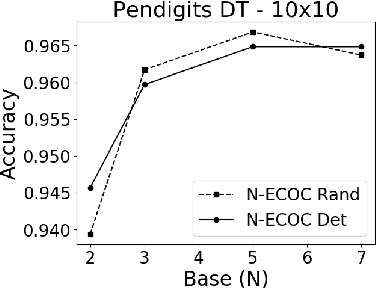
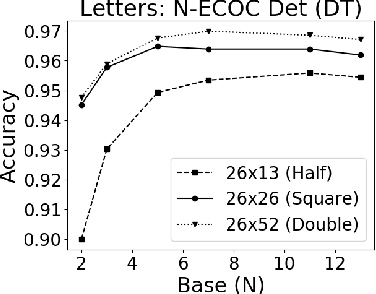
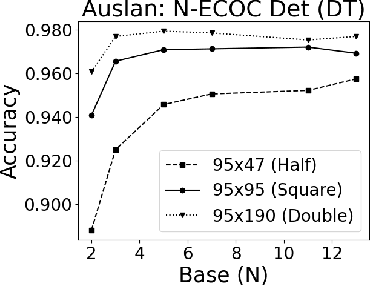
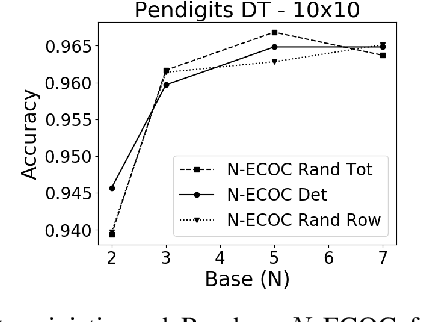
Abstract:A new recursive construction of $N$-ary error-correcting output code (ECOC) matrices for ensemble classification methods is presented, generalizing the classic doubling construction for binary Hadamard matrices. Given any prime integer $N$, this deterministic construction generates base-$N$ symmetric square matrices $M$ of prime-power dimension having optimal minimum Hamming distance between any two of its rows and columns. Experimental results for six datasets demonstrate that using these deterministic coding matrices for $N$-ary ECOC classification yields comparable and in many cases higher accuracy compared to using randomly generated coding matrices. This is particular true when $N$ is adaptively chosen so that the dimension of $M$ matches closely with the number of classes in a dataset, which reduces the loss in minimum Hamming distance when $M$ is truncated to fit the dataset. This is verified through a distance formula for $M$ which shows that these adaptive matrices have significantly higher minimum Hamming distance in comparison to randomly generated ones.
Ensemble Learning using Error Correcting Output Codes: New Classification Error Bounds
Sep 18, 2021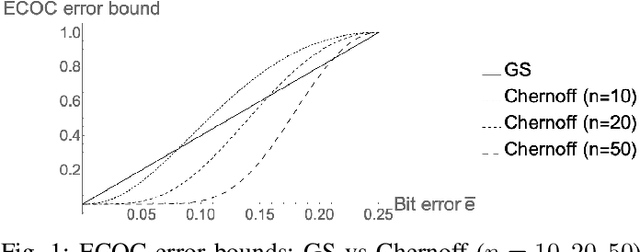
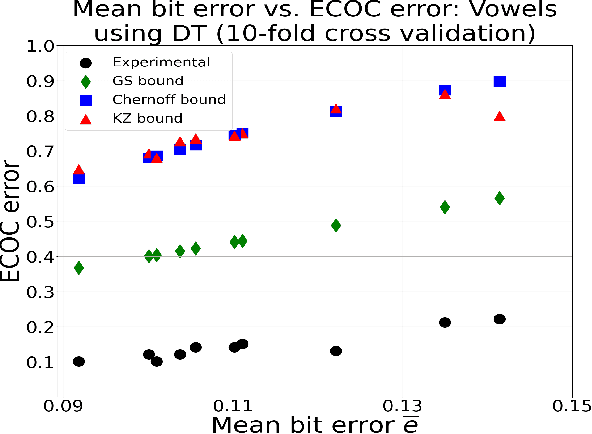
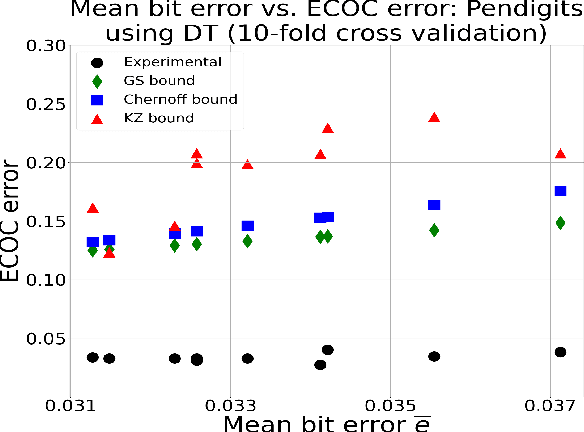
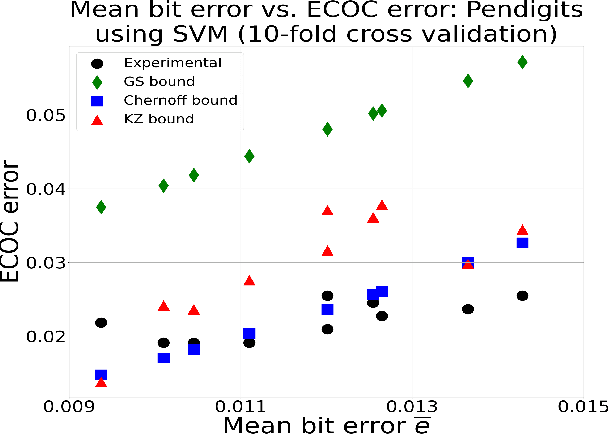
Abstract:New bounds on classification error rates for the error-correcting output code (ECOC) approach in machine learning are presented. These bounds have exponential decay complexity with respect to codeword length and theoretically validate the effectiveness of the ECOC approach. Bounds are derived for two different models: the first under the assumption that all base classifiers are independent and the second under the assumption that all base classifiers are mutually correlated up to first-order. Moreover, we perform ECOC classification on six datasets and compare their error rates with our bounds to experimentally validate our work and show the effect of correlation on classification accuracy.
 Add to Chrome
Add to Chrome Add to Firefox
Add to Firefox Add to Edge
Add to Edge